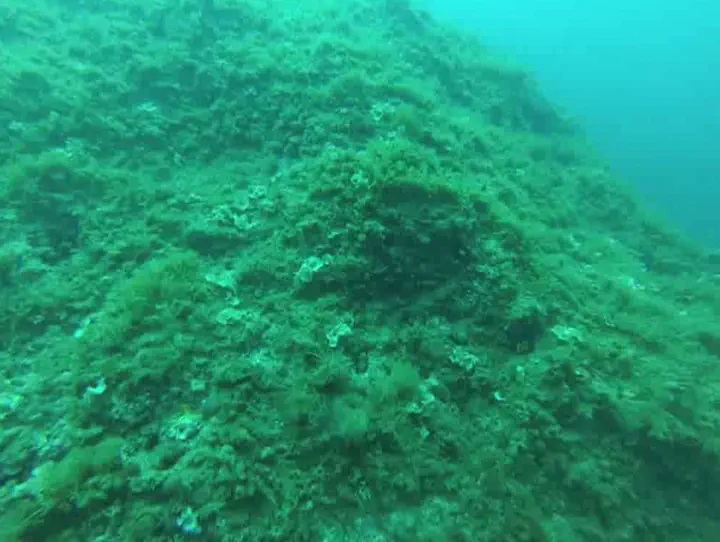Seabed classification
Numerical simulation of high-frequency hydro-acoustic problems in coastal environments
 Rocky seabed in Cabo de Palos (Murcia)
Rocky seabed in Cabo de Palos (Murcia)The main goal of SIMNUMAR project is focused on the development and application of novel techniques of numerical simulation to acoustic wave propagation phenomena at high-frequency regime in highly heterogeneous and complex coastal environments.
The researchers involved in the SIMNUMAR project are A. Prieto, L. Hervella-Nieto and J. Tarrío from the University of A Coruña, N. Sánchez-Carnero (see [1]) from the University of Vigo, and D. Santamarina from the University of Santiago de Compostela. SIMNUMAR project is funded currently by the Xunta de Galicia grant “emerging projects” (EM2013/052).
Taking into account the specific goals of this project, the following tasks will be addressed:
- Mathematical modelling of the coastal fluid media (highly heterogeneous and depending on several state variables) and the application of novel structural models to govern the seabed as a poroelastic medium.
- Application and numerical analysis of techniques based on absorbing layers to truncate unbounded domains in presence of interfaces between heterogeneous fluid and poroelastic media.
- Review and development of efficient and robust numerical procedures to approximate accurately the harmonic motion in hydro-acoustic problems at the high-frequency regime, involving measurements of side-scan sonars in a range from 1kHz to 200kHz.
 Figure 1: Sonar time-dependent signals obtained from different seabeds: rocky, sand,
and sand with vegetation.
Figure 1: Sonar time-dependent signals obtained from different seabeds: rocky, sand,
and sand with vegetation.
During the SIMNUMAR project, both supervised and non-supervised classification methods have been compared and applied to a large dataser of hydroacoustic signals (mono-beam echosound) depicted in Figure 1 (see [2]). Seabed characterization in coastal environments is usually based on acoustic techniques since direct measurements are very costly and time-consuming. The echosounders (from singlebeam to multibeam ones) insonify the sea bottom, sending an acoustic signal from the boat (or towfish), and record the backscatter as a continuous signal, the echo. The standard methodology for seabed classification uses features extracted from corrected (or uncorrected) echoes and applies a classical multivariate approach (PCA and cluster analysis) to group them into acoustic classes. Although this approach is widely used and provides satisfactory results, selecting only a number of features means to discard a large amount of information that could help to discriminate more seabed details. Moreover, traditional approaches require pulse-length correction to avoid depth dependent results, waiving resolution in the data. The present work introduces alternative automatic and statistical methodologies based on either time series cluster methods or non--hierarchical cluster techniques for functional data analysis (FDA), that allow to work with the whole signal without information reduction. More precisely, unsupervised methods such as the FDA $k$-means method, the multivariate medoids clustering, and time series cluster techniques have been applied. The supervised FDA techniques such as functional generalized linear models (FGLM) and functional generalized spectral additive models (FGSAM) have been also considered. Performance of these techniques has been illustrated using acoustic data acquired in a controlled setup over three different bottom types. Both FDA $k$-means and time series clustering approaches have provided seabed classification with accuracies over $90\%$. Moreover, these methodologies were used to analyze the classification power of the echoes identifying the topmost significant portions of the signals. Furthermore, this could point to new relevant features that would improve the results of traditional multivariante approaches.
References
[1] N. Sánchez CarneroTécnicas acústicas y software libre : aplicaciones en la gestión costera.
PhD Thesis. Departamento de Bioloxía Animal, Bioloxía Vexetal e Ecoloxía. Universidade da Coruña (2012).
[2]
J. Tarrío-Saavedra, N. Sánchez-Carnero, A. Prieto.
Comparative Study of FDA and Time Series Approaches for Seabed Classification from Acoustic Curves.
Mathematical Geosciences,
52 (2020) 669-692.
(R-code)
(R-notebooks)
(dataset)